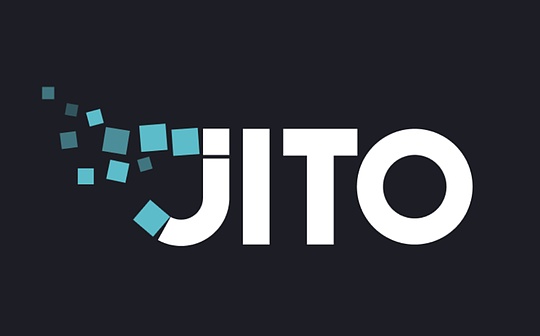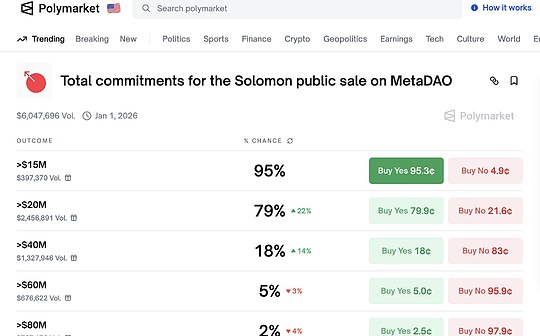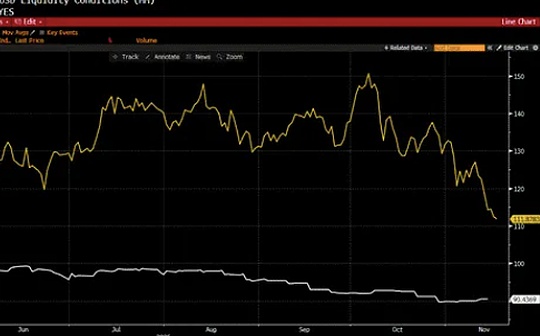
Author: Francesco, source author’s blog; compiled by: Songxue, Bitchain Vision
Repair seems to be positioned as one of the main narratives that drive 2024.However, while many people talk about how restaking works and its benefits, the situation is not all optimistic.
This article aims to take a step back, analyze re-staking from a higher level, emphasize risks and answer questions like this: Is it really worth it?
Let’s first introduce this topic quickly.
1. What is re-pled?
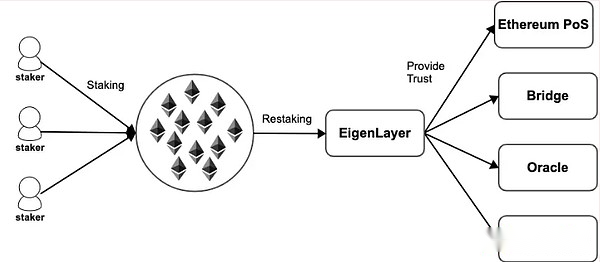
Ethereum’s Proof of Stake (PoS) acts as a distributed trust mechanism, and participants use their interests to ensure the security of the Ethereum network.
Restaking means that the same interests in Ethereum PoS can now be used to protect many other networks.
Re-staking can be interpreted as programmable staking, where users choose to participate in any positive or negative incentives that protect other infrastructure.
In practice, EigenLayer’s re-pledgers provide financial trust (in the form of pledged ETH) so that anything objectively verifiable can be cut.
EigenLayer is “modularizing” Ethereum’s distributed trust so that AVS services can leverage it without launching its validator set, effectively lowering the barrier to entry to the market.
Typically, these modules require active verification services that have their own distributed verification semantics for verification.Typically, these active verification services (“AVS”) are either guaranteed by their own local tokens or are licensed.
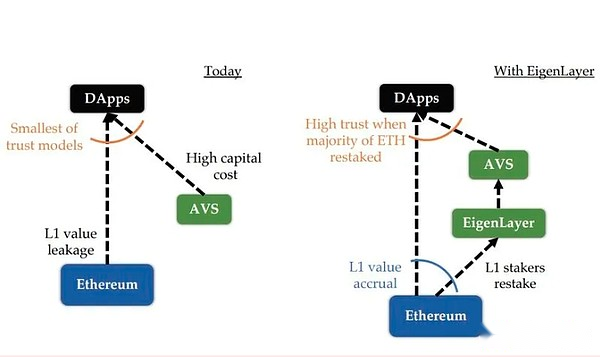
2. Why do anyone do this?
Simply put, this isBecause of economic incentives and benefits.
If Ethereum’s staking income is around 5% per year, re-staking may provide attractive additional benefits.Estimates of these rewards are not available at this time, as they will depend on demand and supply dynamics on the Eigen Marketplace.
However, this presents additional risks to the pledger.
In addition to taking advantage of the inherent risks of using the ETH they staked, when users choose to re-stake their tokens, they essentially delegate the power of the EigenLayer contract to them to cut them when there is an error, a double signature, etc. on any AVS they guarantee.Rights and interests.
Therefore, re-staking adds a layer of risk, as re-stakingers may be cut on ETH, on re-staking, or both.
Is the additional income worth re-private?
R(isk)-Staking
For stakers, restaking means you can decide to opt in as many networks as possible and increase your earnings, therefore EigenLayer calls itself “Airbnb of distributed trust”.
However, not everything is so good, as restaking adds some significant risks:
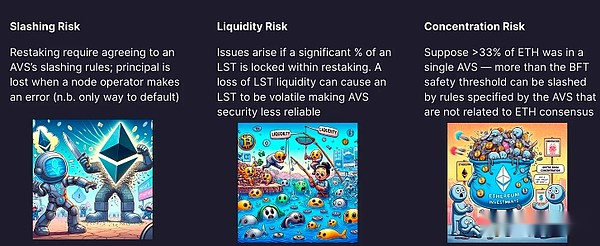
-
ETH must be pledged (or LST – therefore not liquid);
-
EigenLayer smart contract risk;
-
Agreement-specific cut conditions;
-
Liquidity risk;
-
Centralized risk.

In fact, through restaking, users are taking advantage of tokens that are already at risk (due to staking) and adding additional risks to it, ultimately forming layers of risks that look like:
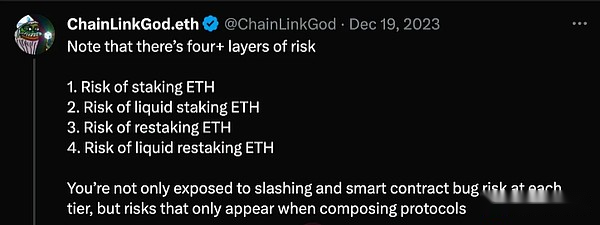
In addition, additional development of these primitives adds more complexity and additional risks.
In addition to the individual risks of restaking individuals, the Ethereum developer community has also raised issues related to restaking, especially in a well-known article written by Vitalik on the non-loading of the Ethereum consensus.The problem with re-staking is that it opens up new risk avenues for protecting the main network’s staking ETH, which uses part of it to protect other chains (choose by the stakinger).
Therefore, if they behave improperly under other protocol rules (possibly vulnerable or have weak security), their staking will be cut.
In this regard, developers and EigenLayer are working hard to coordinate their work to ensure Ethereum is not weakened by these technological advances.
It is indeed not easy to readjust the most important “layer” and protect Ethereum.
Furthermore, a key aspect in this regard is the level of risk management allowed by the repossessor.
Many restaking projects hand over the AVS’ whitelisting process to their DAO.However, as a reprivator, I want to be able to personally review and decide which AVS to reprivate to, to avoid being cut by malicious networks and to reduce the likelihood of new attack vectors.
Overall, re-staking is an interesting new primitive worth studying.
However, the concerns of Vitalik et al. cannot be ignored.When it comes to restaking, it is important to remember how this affects the security model of the Ethereum mainnet.
However, a fair view of restaking provides an additional layer of risk on top of one of the most important mechanisms to protect Ethereum.
In the end, whether re-pled is worth it is a personal choice.
Re-pled risk:
-
Collective risk: Many operators may attack a set of AVS at the same time and endanger security;
-
Cut risk: Re-staking users may face cut penalties from ETH and AVS;
-
Single point of failure: receiving withdrawal vouchers from Ethernet vouchers (system risk of the main network);
-
Centralized risks of validators;
-
Added additional risks to protecting Ethereum’s staking.
3. Attraction to institutions
Perhaps surprisingly, many institutions have expressed interest in restaking as an additional reward in addition to pledging ETH.
Nevertheless, they may restake through their custodians rather than joining any other service that may put them at additional risk of cutting.
Taking into account the risks mentioned earlier, the highest interest in re-pending may come from retail investors or institutions.
It is attractive for those who are already involved to get extra benefits beyond local ETH staking, but for those who already understand these risks, it is not a life-changing benefit.
This opens up new use cases for Ethereum as a financial instrument.
A particularly interesting comparison is comparing the resolution app to “company bonds.”
The new network wants L1 security, similar to how companies or states use their financial systems to create bonds and protect their assets.
In the crypto space, Ethereum is the most extensive and mobile network, probably the only network capable of maintaining such a market, and the safest from a similar viewpoint of countries in traditional financial economies.
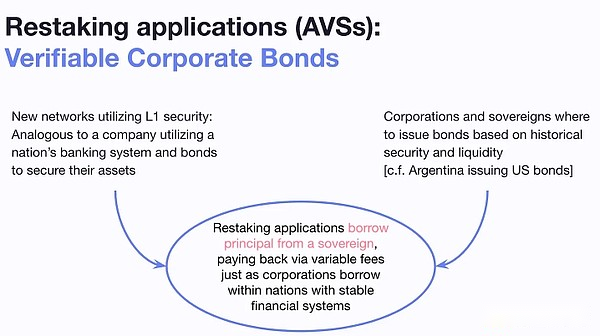
Currently, most interest in restaking seems to be driven by speculation from EigenLayer airdrops, which may just be the largest airdrop in crypto history.
How will it change after the airdrop?
Perhaps actual risk/reward analysis may push some people to find other avenues that may be more productive.
I dare say that a high proportion of capital invested in re-staking may be the capital hired and then may leave after airdrop.
分离出投机成分将是评估用户对这种新基元的真实兴趣的基本因素。
个人而言,我认为再质押的叙事有点被过度宣传,需要仔细评估其中存在的风险。
Summarize
-
由于再质押,AVS在启动时可以利用以太坊高度强大的安全层,降低了成本障碍。
-
用户通过有选择地再质押他们的ETH,从而获得更多的质押奖励,受益于资本效率的提高。
-
再质押在其他风险之上增加了额外的风险。
Restaking is an exciting primitive that inspires new use cases.
Although the comprehensive development of the Eigen market will be completed within about a year, there are already some interesting re-staking experiments being explored.
Some of the concerns raised by Vitalik involve the concentration of pledge power, and pledge alone has been damaged.
It would be interesting to see how EigenLayer will work with the Ethereum Foundation to solve these problems.
But besides that, there are other problems.
What steps can we do to mitigate these risks?Some solutions to mitigate the risk of re-staking include optimizing re-staking parameters (such as TVL cap, penalty amount, fee allocation, minimum TVL, etc.), as well as ensuring that funds are diversified between AVS.
One step that can be considered immediately by the replenishment agreement is to allow users to choose different risk configurations when replenishing deposits.
Ideally, each user should be able to evaluate and choose which AVS to restake without delegating the process to the DAO.
This requires a joint effort between AVS and EigenLayer to ensure there is an ongoing roadmap to minimize these risks.
The EigenLayer team has partnered with the Ethereum Foundation to further align and ensure that restake does not increase system risk by restaking Ethereum, liquid staking tokens or leveraging its AVS.

